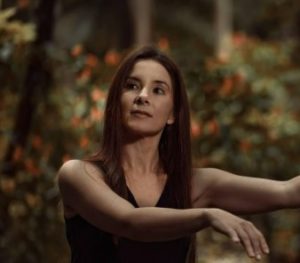I will share my advice to write great descriptions so you can make your scenes as visual as the graphics you create on Book Brush!
Have you ever wondered how to incorporate your setting in your scenes without boring the reader?
I often notice that authors adopt two alternatives when describing their scene’s location. The first is to offer a chunk of description at the beginning. Quick, like the reaping of a bandage. I can almost hear the author saying, “That didn’t hurt, right?” And then, they promise never to mention it again.
The second approach is to ignore settings altogether. Perhaps the writer is afraid to bore the reader and only offer general location terms like the characters were in a bedroom, park, or beach, allowing the reader to do the heavy lifting in their imagination.
I don’t believe there is a right or wrong in writing fiction, but I must say both approaches are inefficient. By quickly delivering descriptions like an objective camera or ignoring them altogether, the writer is missing out on a fantastic tool. My novels are set in Portugal, and part of the reason I chose this location was to offer the reader a chance to spend time in this unique setting, offering an immersive experience.
Settings can also heighten conflict, add authenticity, reveal character, show emotions, and much more. For a great article on the usefulness of settings, check out Jack Smith’s What is the Setting of a Story? 5 Functions of Setting in Literature
How do you do that? How do you incorporate the setting without boring the reader?
The answer is simple. Every single setting description must come from the character’s lens. It does not matter how poetic you can make a paragraph of description. Unless you transmit it through the character’s idiosyncratic view of the world, it won’t have meaning for the reader.
For instance, right at the opening of my novel, The True Purpose of Vines, my character describes a peacock in the garden. These were her exact words:
“The squawking, shrill sound grew louder as she neared the front door. Zezé lifted his plumage high, shimmering his tail. The crowd of D’Angola hens ignored the peacock’s plucky attempt to call their attention and pecked their way among the hydrangeas, oblivious to the self-proclaimed king.”
Julia is a practical winemaker, trying to keep her wine business afloat in a male-centered world, so she notices how the peacock tries to lord over the hens. If my male character, a typical Victorian British male, had seen the same bird, he would have scoffed at the gaudy colors and the uselessness of keeping such a useless specimen.
How would your character describe it? Start using this exercise to illustrate random things from your character’s point of view. Soon, your descriptions will not only be interesting but also reveal layers of your character’s personality and emotions.
Speaking of emotions, why rely on cliched body reactions (her pulse sped, his heart pounded, her eyes widened) when you can use the setting and props to show emotion?
If your character interacts with the setting, chopping wood, fishing, sword fighting, drinking wine, or reading, the way he handles the instrument/activity will uniquely convey emotions. It can even escalate your scene’s conflict. Imagine a chef getting angry with his boss while dicing meat. You can show a progression by having him do it gently at first, then pounding the wood block, to finish by brandishing the cudgel in his boss’s direction. Don’t you think the scene’s stakes are immediately higher?
If the characters aren’t interacting with the setting, how can you convey the description in a way that shows emotion? The critical question is: if I were my character, and I felt how he feels now, what details would I notice? A woman in love strolling through a park will see the spring blossoms coming earlier this year, hear the kids laughing at the carrousel, and scent the funnel cakes from a nearby stall. A depressed man or psycho would notice different details.
When choosing the setting for your scenes, pick one that helps your scene’s goal, enhances the drama and suspense, and adds conflict. At the very least, the location should offer an opportunity for triangulation.
Triangulation is useful for avoiding on-the-nose dialogue. Around my novel’s midpoint, my characters fought, and then they had to travel together. The male character wants to apologize, but the female character wants to protect her feelings. If the scene happened in white space, the dialogue would be dull, with the characters saying exactly what they meant.
Instead, I mined the setting for a prop that allowed my character to convey her feelings within the subtext. I used jessamine flowers, a night blossom that has a sweet scent. Here is the final result:
Shadows played over Griffin’s face and on the planes of his broad shoulders. He caught her stare, holding her captive for long seconds. He cleared his throat. “Are you comfortable? The inn was full, and—”
“The room is fine, thank you.” She drifted to the jessamine bush. “I am much indebted to you, Mr. Maxwell.”
“Back to Mr. Maxwell? I thought we had dropped the formality, at least when we were alone.”
He touched her chin, and she pulled away. His hand, elegant and powerful, stood raised for a heartbeat, then fell by his side. She was glad he did not press her further. She truly was. His breath brushed her brows just before he reached for one of the moonlight-painted blooms.
Before he could make contact, she caught his wrist. “They are more delicate than they appear. Look.” With the tip of her finger, she skimmed one.
They both stared as the bud floated down in a haze of perfume.
“Listen, I am sorry for the way I treated you at Boa Vista.”
“It’s better if we keep our distance. At some point, you will leave, and I…” She swallowed, her throat dry as chalk. “The night blossoms are not the only ones that bruise easily.”
By interacting with the flowers, my character could express her fear without exposing feelings she is not ready to admit. Triangulation allows for the use of subtext and creates a much more natural dialogue. For an extensive and brilliant textbook on how to use triangulation for improving dialogue, check out Robert McKee’s Dialogue: The Art of Verbal Action for Page, Stage, and Screen
So, if you want to add some spice to your settings, my advice is this: walk around in your character’s shoes. Use his senses, personality, and current emotional state to express the location through his point of view. I promise it will instantly improve your WIP.
 Article by Giovanna Siniscalchi
Article by Giovanna Siniscalchi
My name is Giovanna Siniscalchi. I´ve chased Nasdaq’s narrative arcs and climax points for twelve long years working as an economist. Still, my romantic imagination was wasted in the financial markets, so I decided to put it to better use: write fiction. My passions are eclectic, including reading, traveling, surfing, wine, and of course, historical romance.
I am the award-winning author of The True Purpose of Vines, a historical romance set in 1870 Portugal about a winemaker and the Englishman sent to steal her vineyards. I would love to hear how you fared with this technique. You can contact me on my social media and send me your scene. I promise to give feedback on the first five I receive. https://giovannasiniscalchi.com/






